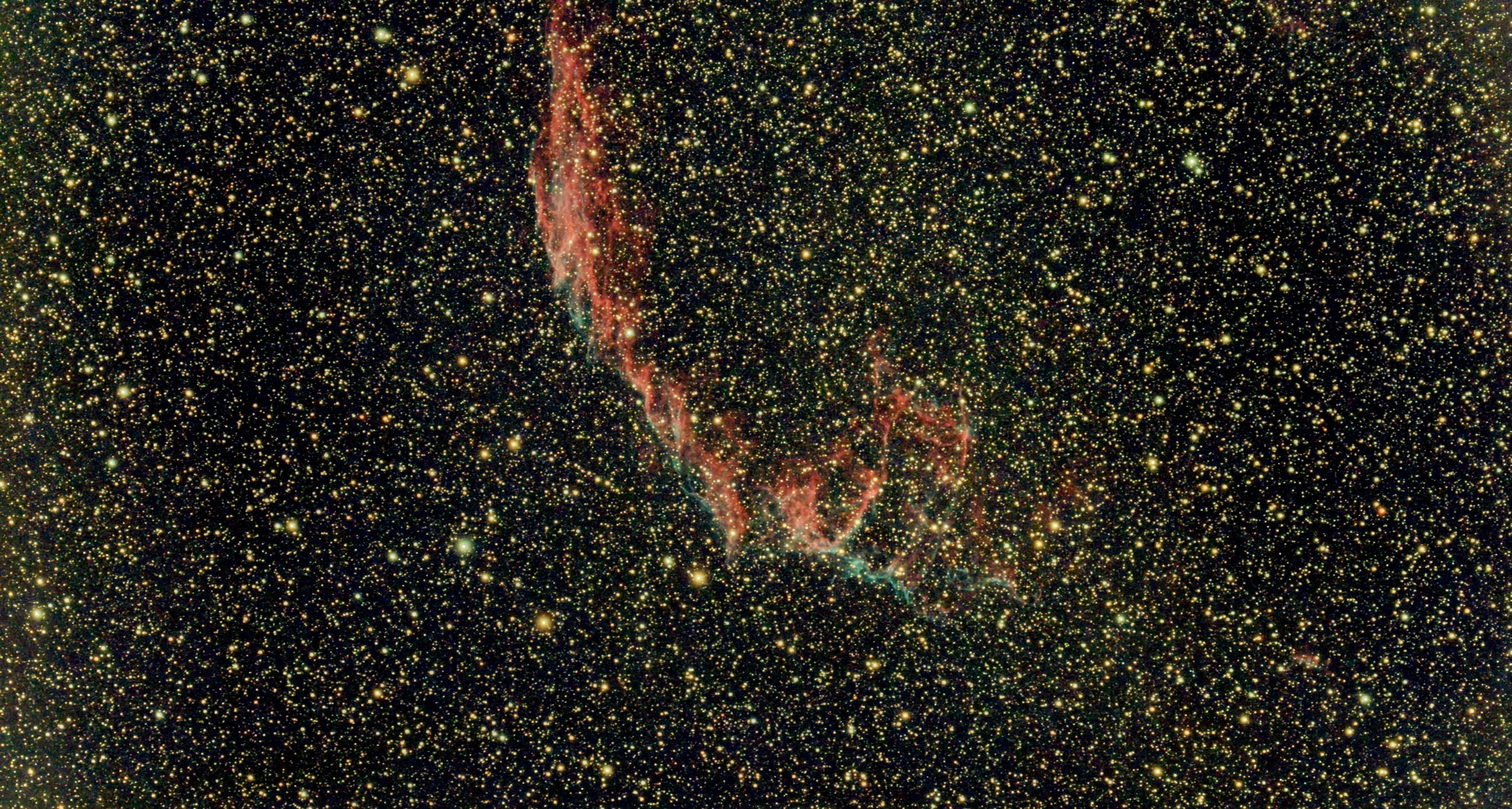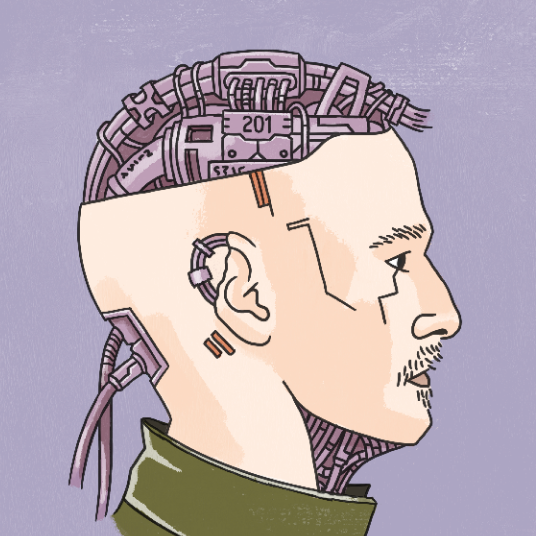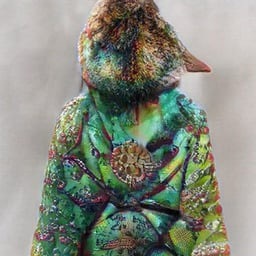More than that, we completely transformed the native ecology of places such that they’re nearly unrecognizable from what they once were. Native plants only occupy a tiny, tiny slice of the ecology that they used to, thanks to invasive introductions that came either accidentally or deliberately with livestock and agricultural imports. I know that in California, many of the plants the native people depended on are difficult to find anymore, and are almost never deliberately cultivated. We also took deliberate, calculated steps over decades to eradicate their cultures, and since very little was ever written down, it was largely successful.
In spite of all that, AFAIK there IS at least a Dine restaurant that they’re using to try and teach their own people and others about their traditional culinary and food-ecology practices.
Some humans suck so much. Like this whole thread is a painful read, even as a random European.
Yeah. There’s also post contact/reservation foods and less accessible are traditional foods of people whose land was less actively stolen like the Alaskan Natives. I’ve had a bit of traditional Yupik food and it isn’t bad
So I almost stopped reading at “native ecology”. You do have a good point about deliberate destruction of what was there, but the American continent wasn’t in some kind of pristine natural state before Columbus arrived. The native peoples altered their environment to suit them. What we call corn today came from maize, but maize isn’t natural, either. Its closest genetic relation to a natural plant is one with tiny, inedible cobs. It’s not clear how they manged to go from that to maize.
Humans alter the environment around them to better suit humans. That doesn’t mean we have to be relentlessly destructive, but we always do it in some way. Narratives that native peoples were in some kind of perfect state of nature feeds into noble savage myths, and take away from their humanity.
But focusing on cultural eradication is a very good point.
To be fair, “native ecology” doesn’t necessarily mean “natural ecology.” A change from the native cultivated landscape to one left fallow and overgrown is still the kind of radically destructive change @conditional_soup@lemm.ee was talking about.
On a related note, it reminds me of this video about suppression of indigenous fire management practices and their consequences.
The indigenous people used to move giant rocks and make rock walls to corral giant herds of buffalo, right off the side of a cliff. Kill thousands at a time.
Hey, yeah, you’re completely right. I definitely didn’t mean to imply that they lived in some unspoiled wilderness or that they didn’t believe in touching the wilderness like a lot of the colonial narratives suggest. I’ve been reading Tending the Wild by Kat Anderson, and it does a lot of work dispelling those myths. What I mean is that they had relationships with the ecology here; California native tribes knew where edible corms grew and how to cultivate them to ensure a good bounty, they knew when to expect and hunt migratory birds, how to sustainably harvest roots and leaves for basketry, how to harvest and use acorns from the various oak species here, and how to get food and shelter from incense cedar and sugar pine without killing the trees. They also knew how to tend these local ecologies to ensure that these plants and animals continued to exist as long-term and renewable resources. In fact, another book I’m reading, Braiding Sweetgrass makes the case that the plants that native people used fare worse without human intervention. While the tribes, at least as early European settlers knew them, were semi-nomadic (they would move between the valleys and the mountains depending on the season) rather than agrarian, they still cultivated and shaped the lands they lived on. They helped to shape and were also shaped by the ecology.
European and American settlers blew almost all of that away without even realizing it in many cases. In California, all it took was introducing grazing animals and declaring land private property.
I fully accept I’m being a bit dense here, but what’s this guys point? There’s a good reason why there aren’t many Native American restaurants, and probably most of the world knows why…
I remember when this came up a few years ago on Twitter. There are First Nations restaurants, most (white) people just don’t go to them and where they are. Yes there are not a lot, it would be much better if there was more. The reason there isn’t is because of colonization and genocide.
But we also have to be careful because presenting a minority group as already extinct exists to help continue the perpetuation of the genocide. As Judith Butler describes.
An ungrievable life is one that cannot be mourned because it has never lived, that is, it has never counted as a life at all’
There is a surviving first nations food culture that doesn’t care whether Patrick Blumenthal has eaten it or not.
Also First Nations food has been heavily assimilated to into many cultures food. Mexican Food, Peruvian Food, etc When people eat these foods they don’t think of it’s relationship to First Nations, but there’s a connection.
Finally stuff like corn, tomatoes, potatoes all of this food that is widespread everywhere is from North and South America and only hits Europe and Asia in the early modern period. What is and isn’t a certain cultures food is not static but subject to forces of history.
"But we also have to be careful because presenting a minority group as already extinct exists to help continue the perpetuation of the genocide. As Judith Butler describes.
An ungrievable life is one that cannot be mourned because it has never lived, that is, it has never counted as a life at all'Thank you so much for this reminder; because of this, I have realised that this is a trap that my thoughts sometimes slip into. Hopefully I will be able to be mindful of it and check myself in future
There’s a native restaurant near me that is kinda like the equivalent of Chipotle for American Indian cuisine, and it’s fantastic. The owners are members of the Osage Nation and have had a few restaurants since the 90s. Really happy for them that they recently expanded to also have a food truck and catering business, as well as a little satellite location at a nearby ski mountain.
I can’t do much to help undo the genocide and cultural erasure, but I damn well take everybody I know to that restaurant.
If I knew of one, I’d totally try it out, but the reservations in my area are a bit out of the way, and I don’t see any obvious native restaurants.
Check out Sioux Chef in Minneapolis. That one is pretty good!
I’ve actually been to a native american restaurant. It was on a reserve. They served buffalo burgers. It was fucking delicious.
To divide indigenous people with our current borders is anachronistic and not useful.
For example, Aztecs migrated from the current United States (or close, as there’s no consensus) into Mexico. I bet they carried on culinary traditions. If so, dishes from Mexico City are an example of native (native to their first and their second land) cuisine.
Yaqui, Pima/Pima Bajo, Kickapoo and other groups lived and live both in the U.S. and Mexico. So, again, northern Mexican dishes might be “Native American” dishes.But that notion alone is problematic as it implies the indigenous peoples’ food was and is more similar than it actually is. We can have Quechua cuisine, Mayan cuisine, Cherokee cuisine, but grouping them up for a restaurant would be as easy as trying to open an “East Asian restaurant” or a “European restaurant”. What to put on the menu? Lol.
I hope I’m not pedantic. I just don’t agree with the divide of the indigenous people by our current nations, and I’m debating the air over here.
Same shit for white people, British food vs English vs USA etc
I’m from Sinaloa (Northwest of Mexico, south of Arizona) and the food is really really different from Mexico City’s cuisine.
I’ve found that New Mexican food (from New Mexico) is really similar and uses the same ingredients. Also the vocabulary spoken in that region combines several Native American words with Spanish (words like adjectives, children or child, animals and foods names, etc) and if you go to our cousin state of Sonora that sits between Arizona and us, you’ll see plenty of Yaqui and Mayo cultural references. They even have a baseball team called The Yaquis.
Exactly my point! And those are nice examples; indigenous culture is alive. Thank you for sharing.
Of course, not a problem.
Seeing as there’s so few restaurants within reach, anyone here know Native American or First Nations food?
What’s a good recipe to make at home from accessible ingredients that will male you want to have it again?
E: 2 votes for Fry bread. Guess that’s what I’ll try.
You might give fry bread a try. There are a lot of recipes available, and it can be topped with either sweet or savory ingedients. I suggest a recipie that uses shortening for frying, but thats what my grandma used to use so I am biased. Cheers!
Love frybread. Got turned onto it by of all things Reservation Dogs, one of the funniest and most insightful series I’ve seen.
Most native food is composed primarily of buffalo meat, fish, corn, tomatoes, potatoes, and berries. Basically just whatever they happened to be able to find and/or farm. Buffalo chili is phenomenal, (buffalo is red meat that is much leaner than beef, so it tastes a lot like beef chili without all of the grease) but maybe not something that you’d want to try as your first undertaking.
Fry bread is quick and easy, but a little bit messy if you’re not accustomed to frying things. Fry bread was often used by many tribes as a sort of base for many of their dishes, sort of like tortillas in Mexican cuisine. It’s dense and fluffy at the same time, because the dough bubbles unevenly as it fries.
And speaking of Mexican cuisine, there is a lot of overlap between native dishes and traditional Mexican dishes, because many native tribes (especially the ones in the southern US) were proto-Aztecan cultures. Remember how I mentioned tomatoes? Mexican salsa has roots in native cuisine. Hell, my own tribe’s language has the same roots as Aztec, the same way english and German are both derived from the same root language.
Out on the Pacific coast, it’s salmon, shellfish, berries, and camas root.
You left out squash, many of varieties of were a staple vegetable across North America (and possibly South as well? I’m less familiar.) Also, peppers. Extremely important.
Fair enough. Aside from pumpkin, I don’t really like most squash… Which is probably why it didn’t come to mind when I was writing the comment. And you’re also spot on about the peppers; Many of today’s most popular peppers originated in the americas. I alluded to that with the bit about salsa, but didn’t outright say it.
Important to point out: native food culture was wiped out because of the forced migration of natives. The federal government subsidized natives with basic food ingredients that were not commodities to them. I can’t really imagine what they ate prior to being pushed out of their native lands without doing a serious deep dive into pre-19th century accounts of their food.
Odd take because plenty of communities have lower populations and still have restaurants of their cuisine. But also because there are a bunch of native cuisine restaurants.
It doesn’t help that a relatively equal society without extreme division of labor is probably not producing cuisine on the same level as cultures with extreme inequality. A class of jealous and idle nobles with personal chefs trying to outdo each other does a lot to push culinary experimentation.
deleted by creator
It doesn’t help that a relatively equal society without extreme division of labor is probably not producing cuisine on the same level as cultures with extreme inequality.
Dude what. Get out of here with your foie gras and make some ratatouille. Not just anyone can be a great cook, but a great cook can come from anywhere.
Did you miss the following sentence or?
No. Being rich doesn’t make you develop a palate. According to rich people food is good when it’s expensive and, for lack of better metaphor, dressed up like a hooker. According to gazillions of home cooks, food is good when it puts smiles on people’s faces, keeps them fit and healthy. The best dish in the world? Probably the secret recipe of someone in Asia working their tiny noodle stand perfecting their bowl for 40 years. Dirt cheap, dockworkers swear by it. Michelin star chefs swear by it. Rich people scoff at it, not enough expensive ingredients.
We also, specifically, forced them into cultural re-education camps to force them to be christian, not speak a native language, or engage with anything from their native roots.
Canadian Native here, if anyone ever has the chance to try moose meat, do it! It’s easily my favorite meat, I’d take moose over a t-bone or prime rib every single time. If I had to eat it every single day for the rest of my life I’d die with a smile on my face. You can make steaks out of it, make ground moose burger, cut it into small slices and stew it, or one of my favorite treats, turn it into smoky jerky etc. Lot’s of different ways to cook it.
The taste is hard to describe, it’s a bit gamey but not overly so (at least to me, I grew up on the stuff) and it’s very tender and flavorful. Tastes a bit like beef I guess but IMO much better.
I had like five slices of Elk salami once while in Norway and I can still taste them.
I’d love to try it. How does it compare to deer? I like deer but I don’t like black bear. That’s my line for gaminess.
Honestly I haven’t tried deer so I’m not sure! My grandparents didn’t like it so they didn’t hunt it. Sorry!
Where I live I estimate at least half of white men hunt deer. Some people look at me funny if I tell them I’ve never been hunting. It’s absolutely necessary for population control, because we’re never going to get these people to go for reintroduction of wolves.
I’ve had a deer steak so good it ranks up with the best beef steaks I’ve had. I’ve had deer so gamey it’s gross. Hunters tell me the biggest influence on taste is how quickly the deer dies. It could be bullshit but I believe it. They aim for the heart, and if their aim is true the deer will die instantly.
I’m a big fan of jerky made in the old style (very thin and chewy) with no sugar added. Deer jerky is my second favorite after biltong. You should try it if you get a chance! I know I’ll keep an eye out for moose now.
Stress hormones taste like ass but that’s not game taste as such.
Interesting, I’ll definitely keep my eye out for some deer when I have the chance, thanks for the recommendation! Jerky made out of pretty much any meat is good tbh, my grandparents also made it out of salmon and it was absolutely amazing. Cut into cubes but left on the skin and then hung in a smoke rack until dry. So good.
There was a comedian who had a routine that went something like “my sister’s husband is German. Whenever he visits the US, he says that you just can’t get good bagels in Germany. I said, “and whose fault is that?” “
All of Latin America: Y’alls cuisines aren’t heavily influenced by native peoples’s? Damn bro that sucks
Now I can’t stop thinking about the Peruvian restaurant down the street
we had a Navajo professor in college, he had a huge attitude problem stemming from all this.
he regurlarly lash out at students because hes mad over what the USA did to his people and he is projecting and misplacing anger.
By “all this”, do you mean 500 years of genocide and oppression? I don’t think I’d consider that an “attitude problem”.
“Most of them” is the understatement of the day. Our country killed nearly all of them.
That’s true, but it’s also important to not overstate it. Anti indigenous groups love to claim that since we basically wiped them out it’s a fool’s errand to give the survivors their reasonable demands like traditional lands and respecting tribal sovereignty.
It is truly staggering the extent of the destruction we caused on the natives to this land.
Wiki says 96% of them were killed. That’s something like 3.6 million humans were slaughtered.
And most all of their land taken.
It’s an injustice in this country that we don’t learn about it more and try to atone as best we can.
There’s a good reason that Hitler’s concentration camps and Final Solution were inspired by America’s campaign against the native nations.
We pioneered race science too
It’s worth remembering that most of them were killed by disease, and that the diseases travelled faster than the colonists. Europe had had centuries of people living in filthy cities where all kinds of diseases were constantly breeding. The survivors carried those diseases but were immune to them. As soon as they met the native populations, the natives were exposed to countless deadly diseases that were completely new to them.
Now, sure, the colonists went and tried to slaughter as many natives as they could, but often they’d get to a new native settlement and find it was mostly empty because everybody had already either died or fled. Who knows, the natives might have been able to put up a fight against the colonists if they hadn’t been so devastated by the diseases. I’d bet that the colonists just took all the natives dying as another sign that their conquest was blessed by their god.
The city of Cohokia was unrivaled in population on the continent until post-colonial Philadelphia about 800 years later, and by some estimates may have even rivaled contemporary London at its peak
There’s other native American cities being found hidden in the jungles of South America too.
The amount of history, stories and people that have been lost to the sands of time are incredible
Keep in mind that at the time London wasn’t all that big a city.
Cahokia is estimated at between 12k and 40k people. That’s a decent sized city for sure, but around the same time, Baghdad had a population over 1 million. Uruk in modern-day Iraq had 40k people at 3000 BC, and Ur hit 100k by 2000 BC. Rome and Alexandria hit 1 million 2000 years ago.
I think Tenochtitlan was more impressive, not only because of the population (estimated at between 200k and 400k on the day Cortez arrived) but also because of how the city looked, basically a city built into the middle of a lake. I still love to look at Thomas Kole’s visualizations of the city
By the way, if you haven’t read Cahokia Jazz, you should. It’s a fun crime story, set in a world where Cahokia didn’t fall, and where the independent native people are waging political battles to keep their freedom as Europeans claim the rest of the continent.
Of that 96% starvation and disease killed many/most. The USA absolutely waged genocidal campaigns against the various tribes but that 3.6 million includes other deaths as well.
And who do we think caused them to die of starvation and sickness without access to the lands they could hunt or doctors.
And then there’s the whole gifting then smallpox blankets thing
Active or not, the Europeans and then the Americans caused the collapse of their civilization.
Imo all deaths are related.
Many weren’t intentional though. There was diseases spread initially by livestock that killed many of that 3.6 million.
Yes, there absolutely were intentional campaigns of genocide but a lot of natives just caught the flu and had zero defense to it. Nobody intentionally gave them the flu because many of these people never saw Europeans.
“Guns, Germs, & Steel”?
Yes GGS= Guns Germs and Steel by Jared Diamond. OP already used the full name.
I guess my sticking point is, does it matter if it was intentional? Contact with Europe destroyed them from both accidents and outright malice. It was still genocide even if it was on accident, imo.
Yes, because at the time we didn’t understand germ theory. The livestock the spanish brought over introduced these diseases to other people via other animals.
If you supermegavirus X to your pet rat which lives in your house and who then gives it to a bird who then gives it to a different bird and eventually kills me are you responsible for my death? No you are not and that is how many/most died. They had zero contact with Europeans.
smallpox being one, there is evidence smallpox originated from horses, which were abundant in europe, horses had thier own pox virus.(and going back further it came from an unknown rodent host.
I have a suspicion that if it weren’t for all the disease the colonizers would have destroyed them anyway.
Also nobody intentionally made them deathly ill? Smallpox blankets.
I never said nobody intentionally made others sick. I said most were not intentionally made sick. Most Natives died before even seeing Europeans.
You’re not wrong.
However, it is worth pointing out that the documented “smallpox blankets” stuff happened in the 1700s and 1800s, which was already a century or two after the continent had been greatly depopulated by diseases spread unintentionally.
Good point, I didn’t think about that.
Measles, syphillis, rubella, mumps, chickenpox even. chickenpox is especially dangerous to adults who never had it.
shooting bison and smallpox blankets say hello
I mentioned starvation specifically because of the needless slaughter of bison.
We count that in the genocide
my point is it is completely fair to say white America killed the vast majority of the natives
whitewashingly pedantic to blame the gun and not the man pulling the trigger
I’m from Oklahoma and rarely saw a Native American. Saw an old guy in Chicago one time and we about shit.
I’ve been living in Oklahoma for over 20 years now, and I’ve still never seen a Native American.
Then kidnapped the remaining children and put them in “schools” where they only thing even attempted was to erase indigenous culture…













